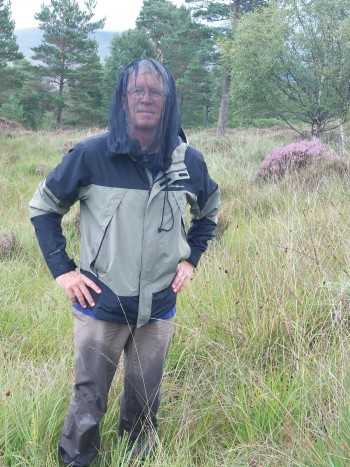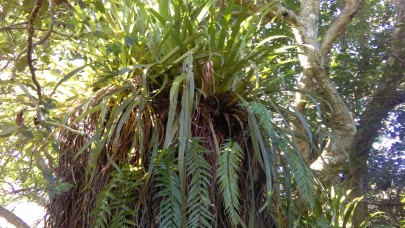Bruce Burns talks plant communities and research communities
 In Aotearoa, two of the main tracks for becoming a scientific researcher are joining a Crown Research Institute (CRI) or joining academia.
In Aotearoa, two of the main tracks for becoming a scientific researcher are joining a Crown Research Institute (CRI) or joining academia.
Bruce Burns, a plant ecologist and Associate Professor of Biological Sciences at the University of Auckland, has spent significant time in both camps.
“I’ve been on both sides of the research coin,” says Bruce. “I was at Manaaki Whenua – Landcare Research for 15 years before starting my role at the University of Auckland in 2008.”
At Manaaki Whenua, Bruce investigated human and natural impacts on native vegetation communities. For example, one of his projects looked at geothermal vegetation around Taupō. This project improved understanding of the composition and distribution of geothermal vegetation and also looked into how these communities were impacted by power extraction.
“The vegetation was driven largely by temperature, which also created these really toxic soils,” says Bruce. “So, when power plants extracted the energy, the temperatures generally declined. This led to changes in what species were able to colonise the area, although any plants still had to cope with the crazy soils.”
From CRI to academia
Bruce’s move to academia was spurred by two desires. First was the desire to teach.
“I wanted more opportunities to mentor and teach the next generation of researchers,” says Bruce.
The second was the desire to satisfy his curiosity.
“There’s a broader range of topics that you can take on in academia,” he says. “I wanted the ability to research things that you don’t necessarily have a charge code for.”
Since joining academia, one thread of Bruce’s work has been to look at species that are influencers in their communities. Bruce has studied kauri, tree ferns, and perching lilies, all of which have a fundamental impact on the composition and structure of forests in which they occur.
 “Perching lilies, for example, create huge structures at the tops of big trees,” says Bruce. “We found that they are habitat formers, providing places for other epiphytes to grow in locations where they may not otherwise occur.”
“Perching lilies, for example, create huge structures at the tops of big trees,” says Bruce. “We found that they are habitat formers, providing places for other epiphytes to grow in locations where they may not otherwise occur.”
Disease can also have a disproportionate impact on an ecosystem, particularly a disease that affects these influential species.
“I’ve done some work on northern rātā, which is a hemi-epiphyte itself, but when mature, also supports vast numbers of other epiphytes,” says Bruce. “If a species like rātā succumbs to myrtle rust, then there will be a huge impact on the entire plant community.”
Bruce has been conducting research on myrtle rust through the Beyond Myrtle Rust programme with the help of postgraduate students and summer students. Bruce and his students have been trying to understand the drivers behind susceptibility and resistance.
“We have a couple of native Myrtaceae that are highly susceptible and some that are less susceptible,” says Bruce. “And even within a species like pōhutukawa, we’re finding instances where one tree is infected, but its neighbour is not.”
They are exploring whether plant traits, environmental factors or endophytic communities can explain this inter- and intraspecific variation in susceptibility.
Contributing to the research ecosystem
Bruce is part of the vast myrtle rust research ecosystem. He sees everyone’s role as essential, and he sees that connections facilitate better knowledge building and sharing.
“In the past, scientists have admittedly worked in siloes without much contact with others,” says Bruce. “I think the move towards more engagement is the only way that we will affect real change.”
Bruce recognises students as having a special role to play in connecting with non-research communities.
“I think students are perceived as more grounded and more a part of the community compared to some of us who have been in the science role for a long time.”
He hopes that the connections students make with communities and with other researchers at other institutions will benefit them in the long run.
“Students who are supervised both from a university and from a CRI have one foot in each camp if you like,” says Bruce. “They have university experience, but they can also see issues from a more applied point of view.”
Bruce (middle) and the team at a site inspection.
- Jenny Leonard
